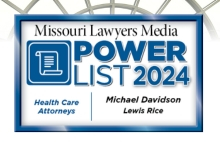Representations and Warranties Insurance FAQ, Part II
September 22, 2014Representations and warranties insurance policies are becoming a more common feature in merger and acquisition (M&A) transactions. Part I of this client alert described our significant experience with these policies and provided answers to five frequently asked questions. Below is Part II of frequently asked questions regarding these policies:
FAQ #6: How much does the coverage provided by these policies cost?
Because the cost of the policy is dependent upon the components of the policy, there is no simple answer to this question. However, an insured should be prepared to pay an underwriting fee (typically nonrefundable) and a premium for the policy's coverage.
FAQ #7: How does the insured get the process started?
Contacting a managing underwriter of these policies or a broker of transactional insurance products is a typical first step. Those underwriters or brokers will want to review the deal documents for the underlying M&A deal. Those documents typically include a purchase agreement and schedules that disclose exceptions to the seller's representations and warranties. Insurers are aware that they might need to execute a confidentiality agreement prior to receiving these documents.
FAQ #8: I can't afford to have my M&A deal bogged down with negotiations over a reps and warranties policy. Can the pace of the policy discussions keep up with the pace of the M&A deal?
It has been our experience that the underwriters of these policies work diligently. Their goal is to ensure that their interaction with the insured on the underwriting process and on the policy negotiations proceeds on a parallel track with the insured's work on the underlying M&A deal. Underwriters are aware that the insured will be busy negotiating and closing that underlying M&A deal. However, the underwriter's ability to achieve the desired pace depends, in large part, upon the insured's responsiveness to the underwriter's request for diligence materials and information and for updates to the deal documents.
FAQ #9: What's the next step after the underwriter has reviewed the deal documents and the diligence materials and information?
Insureds can expect the underwriter to request answers to many questions. These questions are often answered during a telephone conference, but they also can be answered in writing. Some of the questions will relate to the background of the underlying M&A deal, and others will specifically address provisions of the purchase agreement, of the disclosure schedules, or of the diligence materials and information. The insured's attorneys, accountants, and other advisors typically participate in responding to these questions.
FAQ #10: How long after those questions are answered can I expect to have the policy issued?
That depends upon whether any questions raised by the underwriter are not fully answered and upon how many new issues (if any) arise from the insured's responses to the underwriter's questions. It has been our experience that the insured and the underwriter typically handle these remaining matters within just a few days and that the policy is issued shortly thereafter. Keep in mind that if the closing of the underlying M&A deal occurs after all of the underwriter's questions have been answered, the insured and the underwriter will likely engage in a discussion at the time of the closing so that the underwriter can determine whether there have been any changes to the deal since the last time the underwriter collected information from the insured.








